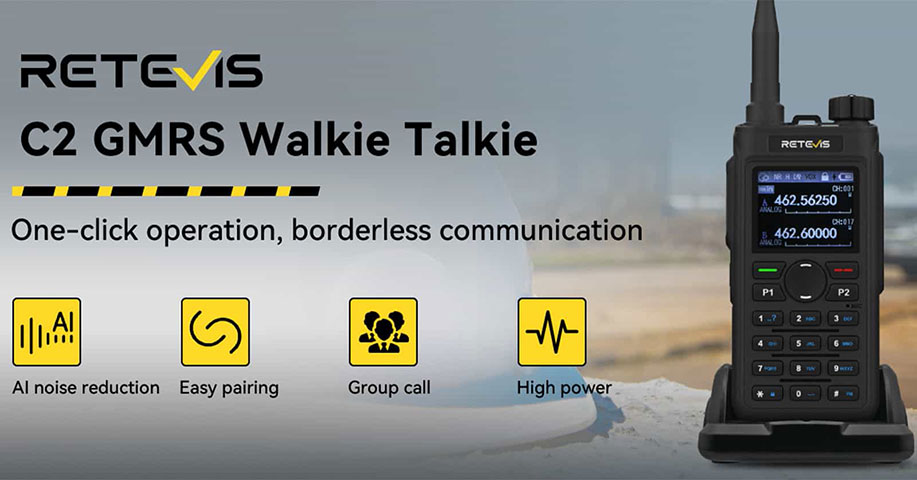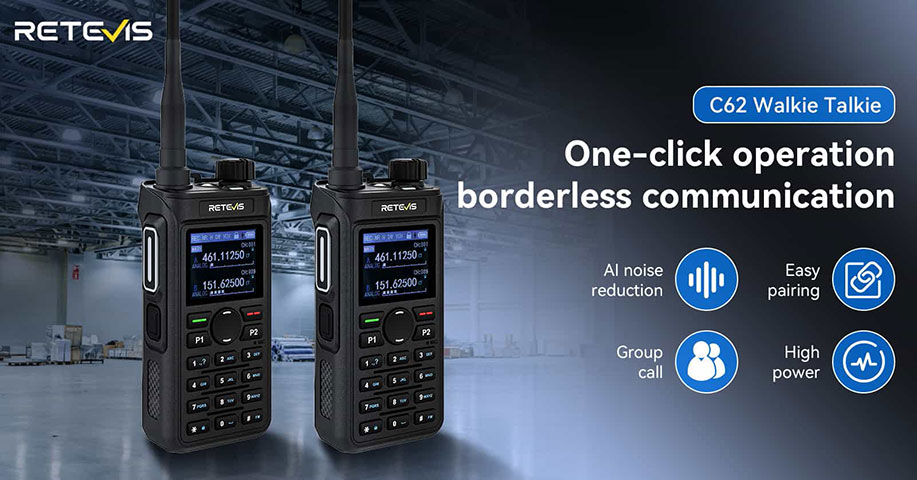GMRS vs. UV Dual Band: Which Two Way Radio is Best for Your Team?

GMRS vs. UV Dual Band: Which Two Way Radio is Best for Your Team?
When it comes to choosing the right two-way radio for your team, understanding the differences between GMRS and UV Dual Band radios is key. Both options are highly effective for communication, but the right one for you depends on your specific needs, region, and intended usage. Let’s explore the key differences and help you decide which is the best fit for your team.
The Difference Between GMRS and UV Dual Band Radios
The primary difference between GMRS and UV Dual Band radios lies in frequency ranges and regional restrictions.
-
GMRS (General Mobile Radio Service) is a U.S.-specific service that operates in the 462-467 MHz range and requires an FCC license. While GMRS radios offer powerful communication over moderate distances, they are limited to the U.S. market and have specific frequency channels designated for use.
-
UV Dual Band radios, like the Retevis C62, support both UHF (430-470 MHz) and VHF (136-174 MHz) frequencies. This gives users more flexibility, as these radios work internationally in regions like both the U.S. and Europe. This dual-band capability allows better reception across different environments and ensures compatibility in a variety of countries.

Features of the Retevis C2 GMRS & Retevis C62 UV Dual Band Radios
Both the Retevis C2 GMRS and Retevis C62 UV Dual Band radios share a set of powerful features designed to enhance communication in various environments. Here are the key features of both radios:
- Group Call Function: Easily call multiple team members at once, making communication efficient and seamless.
- Full Keyboard: Quickly adjust settings or switch frequencies, offering flexibility during use.
- Noise Reduction: The AI chip reduces background noise, ensuring clear communication even in noisy environments.
- NOAA Weather Alerts: Both radios support NOAA weather channels, keeping your team informed with emergency weather alerts.
- Large Battery Capacity: With a 2000mAh battery and Type-C charging, these radios offer extended usage, ensuring they can keep up with long shifts or events.
- 10-Level AI Noise Reduction: This feature ensures the clearest communication in environments with high levels of background noise.
- Full Keyboard and LCD Display: Easy to operate with clear visibility of settings, even in challenging environments.

Suitable Environments and Scenarios
Both radios are suitable for a wide variety of environments, making them ideal choices for teams across different sectors. Here are the types of scenarios where both the Retevis C2 GMRS handheld radio and Retevis C62 UV Dual Band radios excel:
-
- Construction Sites: For clear, reliable communication across large areas.
- Warehouses and Factories: Ensuring smooth operations and team coordination.
- Outdoor Recreational Activities: Perfect for hiking, camping, or other outdoor events that require long-lasting communication.
- Security Teams: Great security radios for operations where reliable, clear communication is crucial.
- Team Communication in Schools or Universities: Facilitating group communication in educational settings.
- Large Events: Effective walkie talkies for events, coordinating large outdoor events like concerts or festivals.
- Buy two way radios:
- C2 GMRS mobile radio: https://www.retevis.com/retevis-c2-gmrs-5w-ai-noise-reduction-noaa-with-dual-watch-durable-business-radio-us
- C62 UV dual band handheld radio: https://www.retevis.com/retevis-c62-5-w-long-range-uv-dual-band-ai-noise-reducation-business-radio-us






